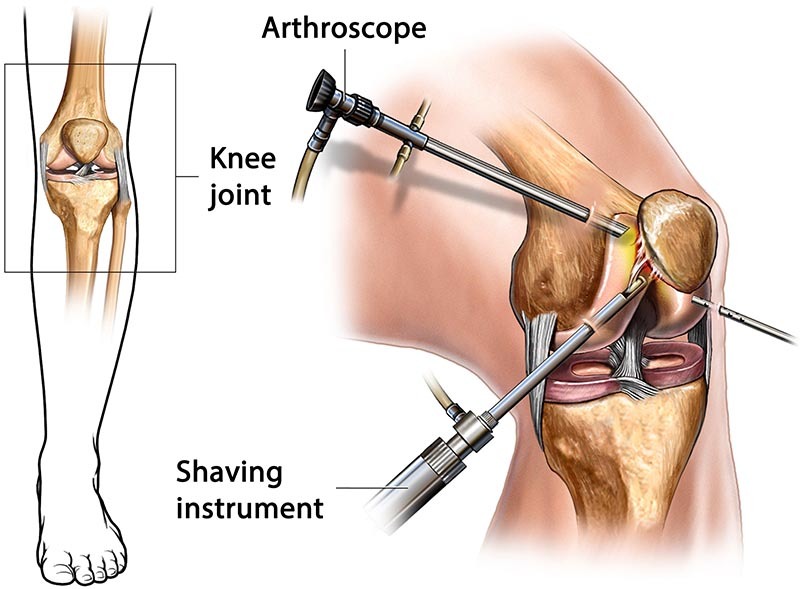Arthroscopy
Arthroscopy, explained in simple terms, is a keyhole diagnostic and surgical procedure. A minimally invasive and safer option, it revolutionized the way orthopedists diagnose and treat a wide variety of conditions related to joints. Orthopedists undergo exclusive training to be able use the arthroscopic tools and perform the surgery.
When is Arthroscopy Needed
Patients suffering from conditions involving knee, shoulder, elbow, ankle, hip or wrist joint benefit can from arthroscopy. Orthopedists fix conditions like torn ligaments and tendons, diseases like arthritis and loose bones and cartilage through arthroscopy. Vidyasagar Hospital is equipped with advanced arthroscopic equipment and our orthopedists are well-trained and experienced in performing arthroscopy.

Arthroscopy for Sports Injuries
A significant portion of cases that qualify for arthroscopic surgery are those of sports injuries. Be it a damaged ACL, torn meniscus, deteriorating cartilage, or tendonitis, the orthopedician or the sports medicine physician will rely on arthroscopy to diagnose and select the most suitable treatment option for the condition.
What Happens During the Surgery
The procedure begins with administering regional anesthesia. At Vidyasagar hospital, we perform surgeries in Laminar Airflow Operation Theaters that theatres ensure a continuous flow of highly filtered ultraclean air. The limb being worked on is fastened to the positioning device. The site is thoroughly cleaned and the surgeon will make a small incision. The size of the incision is one-fourth inch in diameter, which is very small compared to the size of incision made during an open surgery. The joint is filled with sterile liquid which will distend the joint and rinse away any fluid obstructing the view of the joint. It will also create more room to work.
The surgeon will then introduce arthroscope into the incision. The arthroscope looks like a small tube of fiber optics with a video camera attached to it. Its diameter is nearly same as that of a pencil. The arthroscope illuminates, magnifies and transmits the video of the interior structure of the joint – like a cartilage, ligament or under the knee cap, onto the video monitors. The surgery team uses the images to navigate inside the joint. After diagnosing the problem, the surgeon will take a call on the treatment. To fix the joint, he will make a few more incisions. While one incision is used to flush saline water, specialized tools are inserted through the other incision and the joint s fixed. In some cases, the orthopedist may decide to go for an open surgery. After the diagnosis and treatment, he will remove the arthroscope and close the incisions with sutures.
Benefits of Arthroscopy
Arthroscopy comes with several benefits compared to those of an open surgery:
- The procedure is simple and straight-forward
- Muscles or tendons are left intact which the surgeon navigates to the joint
- Smaller incision (s) means lowers chances of infection
- The risk of damage to surrounding tissues is minimum
- The incisions will heal in a day or two and you will be discharged from the hospital quickly
- Pain and swelling from arthroscopy are comparably less than that from an open surgery
- The scar from arthroscopy is minimal
- You can get back to daily activities at the earliest


